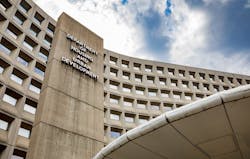HUD Announces Plans to Reintroduce Obama-Era Rule to Combat Housing Discrimination
The U.S. Department of Housing and Urban Development announced on Thursday that it plans to reinstate and strengthen the Affirmatively Furthering Fair Housing rule, a provision of the Fair Housing Act of 1968 that was introduced by President Barack Obama's administration in 2015 and later cut by the Trump administration.
The rule allocates federal housing money to address local housing discrimination in U.S. metro areas through revised zoning laws that allow for the construction of more apartment and condo buildings and smaller, affordable, single-family homes, Realtor.com reports.
Many wealthier suburbs had fought these changes as residents worried their property values could fall as a result. The rule would likely have resulted in smaller, cheaper homes going up in these areas geared toward renters and buyers with potentially lower incomes. This could have altered the racial and socioeconomic makeup of these communities, essentially desegregating them.
It’s an effort by the federal government to reverse some of the damage it did when it prevented many people of color from accessing low-cost mortgages and barred them from buying and living in predominantly white communities through redlining and segregation.
